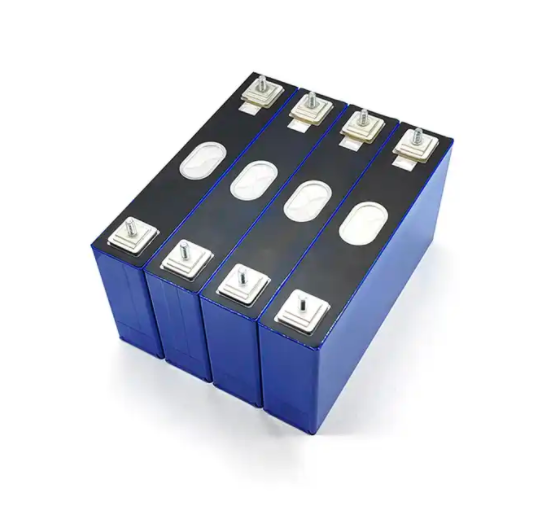LiFePO4 battery have become a popular choice in various applications due to their unique characteristics. Whether you're considering these batteries for electric vehicles, solar energy storage, or other uses, understanding their advantages and disadvantages is crucial.
Advantages of Lithium Iron Phosphate (LiFePO4) Batteries
1) Long Battery Life
Under standard testing conditions, a single LiFePO4 cell typically achieves over 2000 charge-discharge cycles, with some specific energy storage batteries reaching 4000 to 5000 cycles. In certain conditions, the lifespan can extend up to 7-8 years. This longevity is one of the primary reasons for choosing LiFePO4 in electric vehicles. In contrast, lead-acid batteries have a lifespan of around 300 cycles under optimal conditions, rarely exceeding 3 years. Battery packs composed of LiFePO4 cells can achieve a lifespan of approximately 800-2000 cycles.
2) Higher Safety
Compared to ternary lithium and lithium cobalt oxide batteries, LiFePO4 batteries offer superior safety. This is primarily due to the stable crystal structure of LiFePO4, where the P-O bonds are relatively strong. Even in overcharge or high-temperature situations, LiFePO4 batteries do not suffer from structural collapse like cobalt oxide batteries or material deformation and oxidation as seen in ternary batteries. They can withstand some degree of overcharge and deep discharge, recovering over 80% after a short-term deep discharge to 0% and are not prone to fire or explosion even when overcharged to 100%.
3) Good High-Temperature Performance
The thermal runaway temperature of LiFePO4 batteries can reach 350°C to 500°C, while manganese lithium, cobalt lithium, and ternary batteries typically experience severe reactions around 200°C. LiFePO4 batteries can operate effectively at temperatures up to approximately 75°C, whereas the other three types of batteries may suffer significant degradation in lifespan if used long-term at around 70°C, potentially leading to thermal runaway.
4) Lightweight
For batteries of the same capacity, LiFePO4 batteries are about 2/3 the volume and 1/3 the weight of lead-acid batteries.
5) High Capacity per Cell
As a power battery, LiFePO4 cells can achieve capacities ranging from 2Ah to 1000Ah, which is not possible with other battery types. Large-capacity cells in electric vehicles can easily integrate with CTP (cell-to-pack) and CTC (cell-to-chassis) technologies to enhance battery energy density.
6) No Memory Effect
LiFePO4 batteries do not suffer from the memory effect, allowing them to be charged anytime without significantly impacting battery life or causing irreversible capacity loss. In contrast, nickel-metal hydride (NiMH) and lead-acid batteries do exhibit memory effects.
7) Relatively Lower Cost
Compared to ternary batteries, LiFePO4 batteries have lower production costs, mainly due to the lower price of the raw materials used compared to those for ternary batteries.
8) Energy-Efficient and Environmentally Friendly
LiFePO4 batteries are more environmentally friendly compared to other types of batteries. They do not contain heavy metals, making them green, non-toxic, and non-polluting.
Disadvantages of Lithium Iron Phosphate (LiFePO4) Batteries
1) Poor Low-Temperature Performance
LiFePO4 batteries perform poorly at low temperatures compared to ternary batteries. The LiFePO4 cathode has relatively low electronic conductivity and slow lithium ion diffusion rates, which, combined with a tendency to experience polarization, reduces the battery’s capacity under cold conditions.
2) Presence of Metallic Iron in the Cathode Material
During the sintering process of LiFePO4, iron oxide can potentially be reduced to elemental iron under high-temperature reducing atmospheres. This elemental iron can cause micro-short circuits within the battery, which is a highly undesirable condition in battery design.
3) Relatively Low Energy Density
LiFePO4 batteries have a lower energy density compared to ternary batteries. A single LiFePO4 cell typically has an energy density that does not exceed 200Wh/kg, and battery packs generally range from 120-140Wh/kg. In contrast, ternary batteries can achieve energy densities of up to 350Wh/kg for single cells and 160-200Wh/kg for battery packs.
4) Lower Product Consistency
From the perspective of material preparation, the synthesis of LiFePO4 involves a complex multiphase reaction including solid-phase phosphates, iron oxides, lithium salts, carbon precursors, and reducing gases. Ensuring consistency in this complex process is challenging, which can result in significant performance variation. For instance, a single LiFePO4 cell might achieve up to 5000 cycles, but the assembled battery pack may only reach 800-2000 cycles. In comparison, ternary batteries generally exhibit better consistency due to more controlled material preparation processes.
